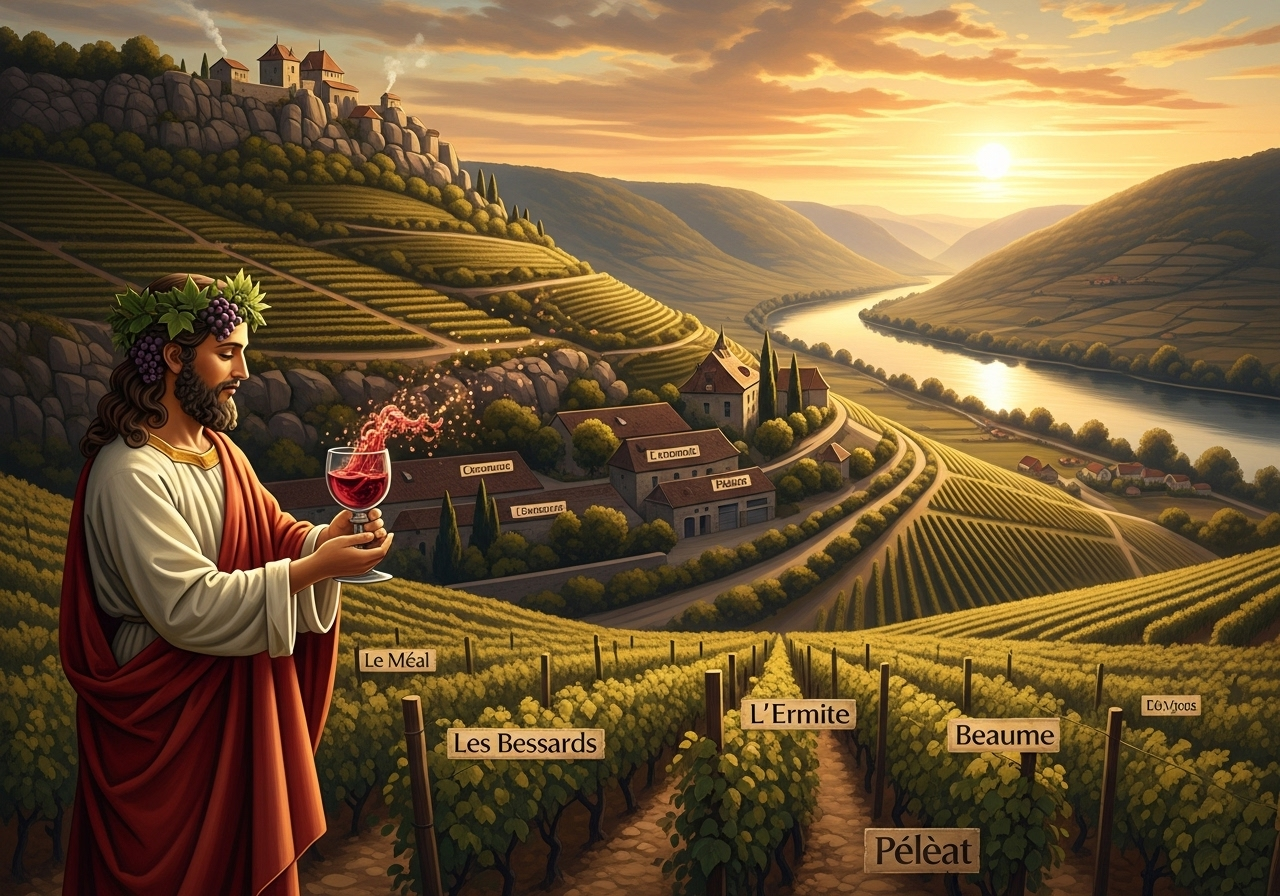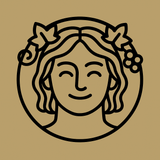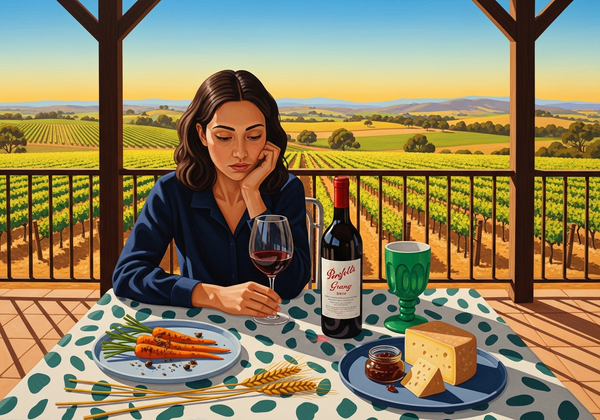In Vines We Trust: The Eternal Legacy of Jean-Louis Chave
Explore the complete history of Jean-Louis Chave and his family’s six-century legacy in Hermitage. From ancient terraces to modern mastery, discover how Chave blends tradition and innovation to create wines that embody the soul of the Rhône.

How one Rhône family turned hillside rock into liquid divinity
Origins: The Rhône’s Eternal River and the Chave Roots
When one thinks of the Rhône Valley, one thinks of movement—of a river carving history, of vines clinging to stone, of civilizations passing yet leaving their mark. It is here, in the granite and quartz terraces of Hermitage, that the Chave family has dwelled since 1481. Yes, while monarchies rose and fell, while revolutions shook France, the Chaves remained: vine-growers, guardians, alchemists of time.
I, Liber, have always favored the Rhône. There is something primal here: granite that demands struggle, slopes so steep they test human endurance, and the persistent hum of the mistral wind. Out of such adversity, greatness is born.
The Chave Lineage: Twelve Generations of Stewardship
Few families in wine embody continuity like the Chaves. From Géraud Chave, who planted the family’s first vines in Hermitage, through centuries of quiet stewardship, to Jean-Louis Chave today, the family’s story is less about ownership and more about guardianship. Each generation has passed the flame, never seeking to dominate nature but to interpret it anew.
In the 19th century, Phylloxera swept across Europe, devastating vineyards. Many abandoned Hermitage; the Chaves did not. They replanted, reterraced, rebuilt. Their commitment ensured that Hermitage—the mythical hill known since Roman times—would not fade into memory.
Jean-Louis Chave: Tradition in One Hand, Innovation in the Other
Born in 1968, Jean-Louis returned to the domaine after studying at UC Davis and in Burgundy. Unlike some heirs who merely inherit, Jean-Louis embraced the weight of his legacy. He expanded holdings in Saint-Joseph, reviving abandoned terraces and honoring forgotten slopes.
Yet his vision was never about expansion for its own sake. His work reflects a philosophy: that each plot of land is a voice in a chorus. To vinify Hermitage is not to create a single wine, but to orchestrate a symphony of lieux-dits—Les Bessards, Le Méal, L’Ermite, Beaume, Péléat. Each parcel, with its soil and aspect, contributes a note. The final blend becomes a hymn to terroir itself.
The Wines: Granite in Liquid Form
To taste a Jean-Louis Chave Hermitage is to taste permanence. These are wines of structure, sinew, and soul. They carry the graphite austerity of granite, the perfume of violets, the density of dark fruits, the whisper of smoked meat. And yet, beneath their grandeur, there is always balance—an elegance that belies the power.
The white Hermitage, too, is a marvel: Marsanne and Roussanne rendered into wax, honey, almond, and stone. Age transforms them into liquid amber, wines that feel eternal.
Liber’s Reflection: Eternity in Every Vintage
What fascinates me most about Jean-Louis is not merely his technical mastery, nor his reverence for tradition. It is his humility before time. He knows that Hermitage was great before him and will be great after him. His role, like his father’s and ancestors before him, is to listen—to stone, to wind, to vine—and to translate.
The Chaves remind us that wine is not fashion. It is not fleeting. It is lineage, labor, patience, and faith. It is the story of a hill, retold across centuries, each bottle a new verse.
And so, the Rhône flows on, carrying with it the legend of Hermitage and the eternal legacy of the Chaves.
Raise your glass, for in it lies not only wine, but history itself.





